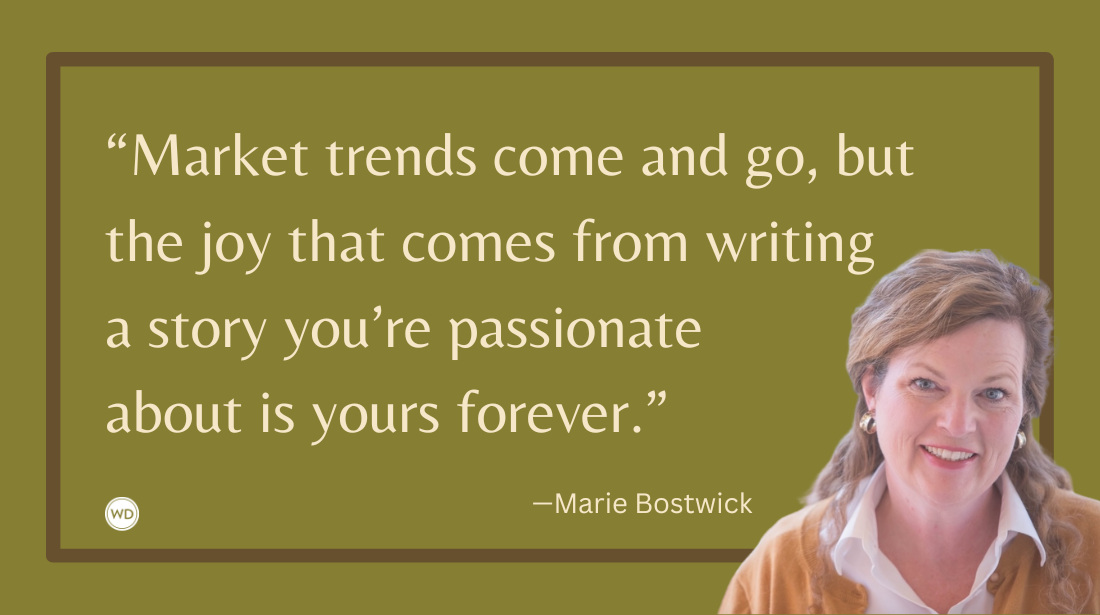Leveraging Back Matter Content
From acknowledgements to discussion guides, author Whitney Hill discusses using back matter to your advantage in this article from the November/December 2022 issue of Writer’s Digest.
Writing the end of a story isn’t always the end of the book. Even if there’s no sequel, there’s more to say, and it goes in the back matter.
Why Back Matter Matters
In marketing, it generally costs less to retain existing customers than to acquire new ones. A book’s back matter offers an opportunity to retain those readers who enjoyed and engaged with your work enough to read it through to the end.
It’s where we can help readers look ahead to the next book, make a connection with them, and offer bonus content to either support the understanding readers have of the story or delight them with more of what they’ve already enjoyed.
Rather than being an afterthought, back matter is a key part of any book.
What Goes Into the Back Matter
While there are various things that can be included in a book’s back matter, there are a few that are pretty standard.
Acknowledgments
Many authors include some acknowledgments in the back matter. These typically call out people who helped in the writing and publishing process (whether professionally or personally). This is where the people who supported the process or who supported a previous book get their shout-outs.
You may also want to call out larger situations affecting you and your readers, especially if something about these events is echoed in the theme, setting, or plot of your story.
About the Author
Even if you’re a shy introvert, including some information about yourself in the back matter is a good idea. People respond to human connections.
It can also be a way for people with opportunities to see if you’re a fit for their websites, publications, or podcasts. If you’ve pulled something about yourself into your work, that could be interesting for people with opportunities to know—and to interview you about or invite you to write or speak about.
Not sure what to say? Focus on what’s relevant to your work: experience, education, accolades, or hobbies. If you feel comfortable doing so, you could also include a photo of yourself.
Series Info
Many indie authors find it beneficial to write series, but not all readers start on Book One. Including a list of the books in the series so far can help those who joined partway through know where they need to go back and start.
If you have multiple series, even under different pen names, also including those offers readers the opportunity to explore and fall in love with your full catalog.
Praise
If you’ve gotten any editorial reviews or won awards for your work, you could add those in the back matter. Some authors will include a blurb on the front or back cover, but if you’re concerned about cluttering the design and aesthetics, then the back matter is a good place for it.
Of course, all of this is optional. If you don’t have some of it or don’t want to include it, that’s OK!
Let’s look at some of the other material that can go into the back matter.
Looking Ahead
The back matter can also be a place to pitch your next book. Depending on your release strategy, you may have the first chapter of the next book ready to go before publication. If that’s the case, including it can hook readers into the next part of the story and get them excited to buy it. (Don’t forget to include a buy link if one is available!)
Even if you don’t have a first chapter ready yet, you may have a title or a general idea of the book’s plot. If that’s the case—and if you’re reasonably certain it won’t change by the time you publish—you could include little teasers about where the story is going next or how readers can stay in touch to get news about the next book.
Making a Connection
If a reader has gone all the way to the end of the book and is continuing to flip through the additional material, you have a real fan! The back matter is a great place to make a connection with these fans. Here are some of the ways you can do that.
Website
An author’s website should be the hub of their online presence and activity. It’s where readers and those with opportunities to offer can learn more information about you as the author, your work, and anything you’re open to considering, from podcast appearances to freelance writing.
There are a few different ways to get more out of your book links, like special landing pages or tracking links to see how many people are discovering your website via the back matter. If that’s too technical for you, a simple URL to your homepage is fine!
Newsletter
Newsletter sign ups are valuable for authors. By including your newsletter sign-up link, you’re filling your list with people who are your fans. Be sure to mention what they can expect or what they’ll get out of signing up. This could be a simple call to action like, “Sign up for my monthly newsletter to receive updates about the next book.”
Caveat: there are some legal considerations for email, including laws like CAN-SPAM and GDPR. Be sure you’re aware of your responsibilities before gathering email addresses or sending emails.
Social Media
If you’re active on social media, be sure to include links to your profiles in the back matter as well. While a reader might have discovered you via social, not all readers do. Many learn of books via word of mouth, book club picks, or advertising. Some may receive your book as a gift.
Make it easier for readers who love your work to connect with you—and don’t forget to make it worth their while to stay once they’ve followed you.
Subscription Platforms
If you have a lot of deleted scenes or you write other story content that doesn’t make it into the final version of the book, setting up on a subscription platform can be a way to share these.
Subscription platforms like Patreon or Ko-fi allow creatives to set up virtual tip jars for their work. Creators can set up tiers with a range of expectations: up to a few dollars simply to support them or show appreciation for their work, ranging up to tens or hundreds of dollars. Higher tiers tend to offer something in exchange, with a value in line with the cost of the tier.
Readers who finish your books and love your worlds may be willing to offer additional support in order to receive these goodies. Including them in the back matter is win-win—it offers the opportunity for readers to stay in your world and lessen their book hangover, while authors get some additional financial support to keep writing.
Informational Content
There’s plenty of other material you could include if it makes sense:
- Glossaries
- A dramatis personae, for books with a large cast
- Discussion guides for book clubs
- Reading guides outlining research or critiques that informed the book
When considering informational content, think about what would be most useful or appreciated by your readers. Adding content adds to the length (and potentially the price) of the book, so anything included should be done with the goal of adding value to the reader in mind.
*****
Even after writing the end of the story, there’s more to say to readers. Keep engaging with them via your book’s back matter to feed their reading cravings, promote your work, and support your ability to keep writing.
Whitney Hill (WhitneyHillWrites.com) is the author of the Shadows of Otherside fantasy series and the Otherside Heat paranormal romance series. Her first book, Elemental, was the grand prize winner of the 8th Annual WD Self-Published E-Book Awards. Her second book, Eldritch Sparks, was one of Kirkus Reviews’ Top 100 Indie Books of 2021. You can find Whitney hiking in state parks or on Twitter and Instagram @write_wherever.








